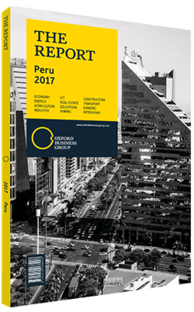Marco Antonio Zaldívar, President, Bolsa de Valores de Lima (BVL): Interview

Interview: Marco Antonio Zaldívar
What are the reasons behind the low trading volumes in recent years?
MARCO ANTONIO ZALDÍVAR: The decrease in the volume of operations that occurred in 2015 and partially in 2016 can be explained by the fact that participants became more sophisticated and resilient. Due to their size, they are no longer attracted to protected markets such as the BVL. Investors use investment vehicles, such as investment or mutual funds, which do not need the protection of the stock market and choose to invest elsewhere. These funds are now strong enough to set prices. Additionally, dark pools have become a more attractive option than regulated markets due to their unregulated nature. This has been the case in most emerging stock markets, although the impact in Peru has been greater. This is due to two factors. First, the implementation of taxes on gains. This is a tax that exists in many markets without hindering investments, but the challenge in Peru is based on the severity of the law, as it requires investors to have a legal representative in the country, in addition to someone in charge of liquidating securities and so on. Secondly, it is no longer expensive to engage in trading operations of dual-listed companies in Lima, as was the case in previous years. The cost of operations is now the same in Lima and New York, which means that many Peruvian investors choose to trade in New York. This has benefited securities operations for Peruvian companies in New York over operations in Lima. Average daily trading in Lima was at $11m in 2016, as compared to the volume of trading of Peruvian securities in New York at around $100m.
What steps can be taken to increase the number of listed companies under the MSCI index?
ZALDÍVAR: The goal of the BVL, given the size and characteristics of the market, should be to remain at emerging market status. There are several things that can be done to maintain the status beyond the requirements dictated by the MSCI. One way is by attracting medium-sized companies to be listed domestically. Furthermore, the BVL may seek to increase the volume of liquidity. In fact, there are already several companies listed in the BVL that have market makers, which make sure that there is an offer and demand for the most relevant securities, thus increasing liquidity in the market by more than 50% in 2016 as compared to 2015. Liquidity volumes remain low, but increasing it from $7.7m to $10.7m in one year shows that the right steps are being taken. If liquidity volumes are maintained and continue to increase, we could expect more companies to be added to the MSCI index in 2017. What we cannot control, however, is what is happening in other countries. There are markets that are showing significant growth, such as Argentina, which is under consultation to be reclassified from frontier market to emerging market status.
How much of an impact has the recent package of incentives had on liquidity?
ZALDÍVAR: Increasing liquidity volumes will be a slow process. The idea behind the measures is that the benefits in capital markets are similar to those in financial markets. Another key aspect of the package is that it is now possible for domestic investors to repatriate their funds if they declare them and pay a 10% tax or invest it in the Peruvian market and pay a 7% tax. This measure, together with the rest of the package, is expected to stimulate the market.
There are many other aspects needing improvement, such as the supply and demand of securities. However, long-term investment culture requires the most development. There are almost 400,000 Peruvians with investments in mutual funds, of which 95% are fixed-income investments. This is due to a lack of trust in the market. Therefore, more effort needs to be put into enhancing financial education in Peru through initiatives offered by the Centre of Stock Market Studies.
You have reached the limit of premium articles you can view for free.
Choose from the options below to purchase print or digital editions of our Reports. You can also purchase a website subscription giving you unlimited access to all of our Reports online for 12 months.
If you have already purchased this Report or have a website subscription, please login to continue.

